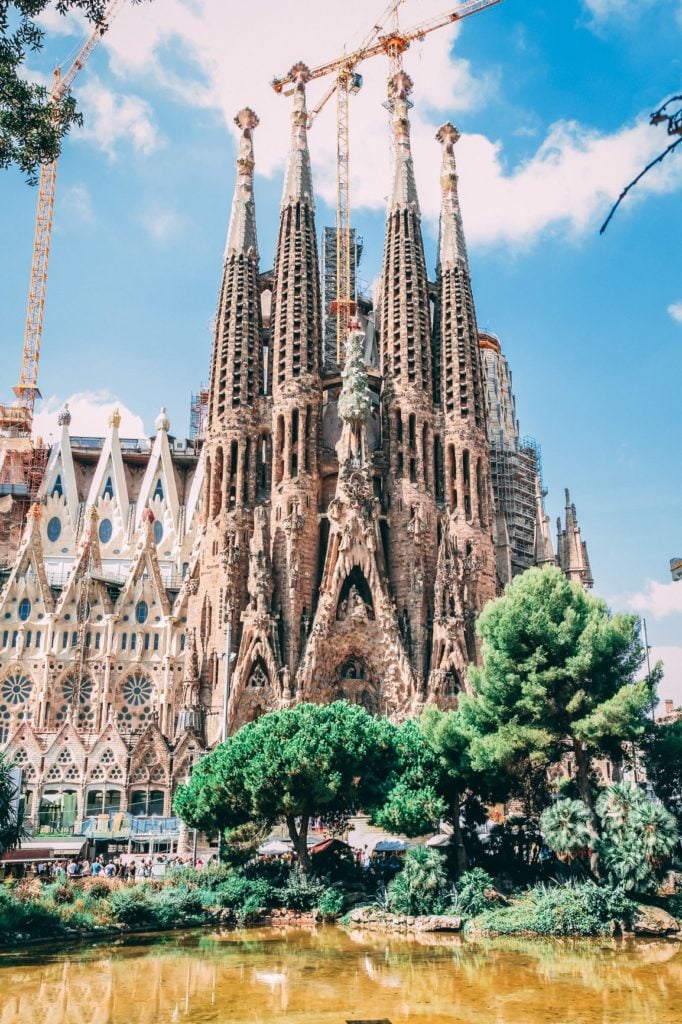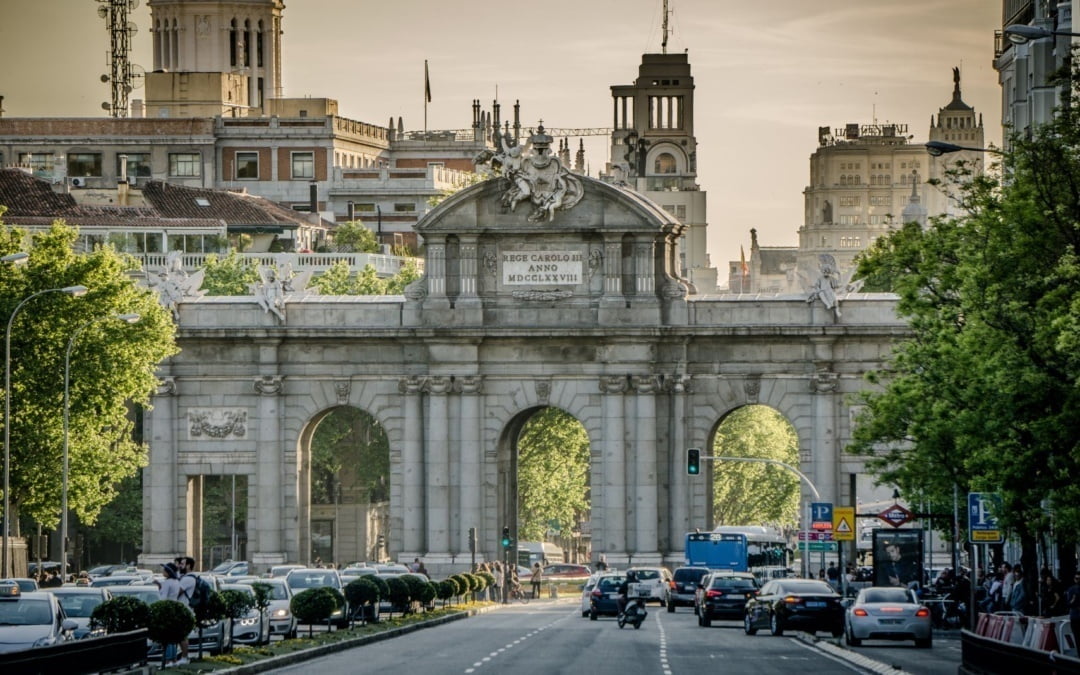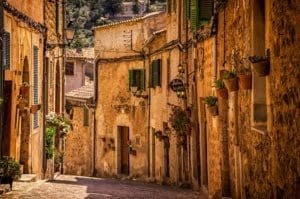Kati and I love exploring UNESCO World Heritage sites around the world. Whether it is Machu Picchu in Peru, or the Pyramids of Giza in Egypt, we always find them educational, interesting and awe inspiring. Spain is filled with them and they are all worth a visit.
By some European standards, it may be considered “exotic” and with its position on the Iberian peninsula, perhaps that assessment is right.
Spain is one of the most visited places in Europe for tourism. With its great weather, legendary nightlife, delicious culinary scene, and a plethora of historic sites that dot the landscape of the entire country, Spain is a must-visit. Spain offers a little bit of everything for any kind of traveler, whether you’re into museums, food, beaches, nightlife, mountains, nature, and hiking there is literally something here for anyone.
Spain has a long and storied history ranging from prehistory to Hellenic ruins and roman structures that still stand to this day. Spain was once one of the biggest world empires with colonies and territories that once spanned from Asia to the Americas. Although most westerners might already be somewhat familiar with Barcelona and Madrid, Spain has some of the most UNESCO World Heritage Sites in the world and they can be found throughout the entire country. If you’re heading to Spain and looking for a dose of history and culture, check out some of these iconic UNESCO World Heritage Sites in Spain.
University and Historic Precinct of Alcalá de Henares
Most visitors to Spain will probably want to check out the bustling and eclectic city of Madrid. Just Madrid alone has a ton of history behind it both ancient and modern but there are always certain little cloisters of the city that some people might end up ignoring and the Alcalá de Henares might be one of them. Located 22 miles northeast of the city center, Alcalá de Henares has been continuously settled since at least the bronze age, and even through the Roman era as there has been archaeological evidence of Roman civilizations living here.
But what makes Alcalá de Henares really stand out is the university. Founded in 1499 by a local Cardinal the University of Alcala is one of the oldest in Europe and is the model for many universities around the globe. The town that surrounds the University was planned around the school giving inspiration for planned cities and university campuses around the globe.
Historic Center of Cordoba
Located in the Andalusia part of Spain the historic center of Córdoba is one of the largest World Heritage Sites around. It was only in 1984 that UNESCO recognized the Mosque-Cathedral of Cordoba in the center of town as a heritage site but soon after the decision was reconsidered to recognize the entire town as worthy of being a heritage site.
What sets the historic center of Córdoba apart from its long history is how that history is displayed. The town center is home to plenty of monuments that span the entire history of Spain. Roman statues and monuments are there alongside Arab and Christian ones giving the city a very eclectic and diverse sense of history along with a mix of architectural styles. Roman bridges and walls sit across from Moorish gardens and Arab mosques. While 16-century seminaries are nearby 13th-century synagogues.
Burgos Cathedral
The city of Burgos might not be on your radar when you’re visiting Spain but it should be! The town is a little less popular with tourists which means that if you’re looking for an experience where you don’t have to fight off other groups of tourists, consider visiting the Burgos Cathedral.
The Burgos Cathedral is a giant roman catholic church in the center of the historic area of Burgos. Dedicated to the Virgin Mary the cathedral started its construction in 1221 in a French Gothic architectural style. After having construction be on hiatus for over 200 years, it was only in the 16th-century that major efforts to stylize it giving it its “flamboyant Gothic” aesthetic that makes it as unmistakable as we know it today. The Burgos Cathedral is the resting place of Spanish folk hero El Cid who is remembered in everything from folk tales to songs and even video games.
Garajonay National Park
Named after a folk story featuring two lovers Gara and Jonay, the Garajonay National Park is almost like taking a step into another world. Located on the island of La Gomera in the Canary Islands the park’s highest peak stands at almost 5,000 feet above sea level. What makes the park stand out is that the flora and fauna are quite unique in that it is a humid subtropical forest that exists as it would have in the Tertiary geological period which spans 66 to 2.6 million years ago.
Despite the park’s relatively small size, the park has several different climates and forest types with tropical rainforest in the humid valleys found in the northern part of the island and more arid and dry forest found in the higher altitudes where there is more wind and less protection from the sun. Accommodation for tourists exists in a small portion of the island just outside of the boundaries of the park.
Royal Monastery of Santa María of Guadalupe
Located in the Extremadura region the megalithic Royal Monastery of Santa María of Guadalupe is a sight to be seen. The monastery has its origins in the 13th-century and for a staggering 4-centuries, it was essentially the biggest and most important monasteries in the entire country. The monastery has its humble beginnings when a shepherd found a statue of the Virgin Mary on the side of the Guadalupe River which was being hidden from Moorish invaders.
The Royal Monastery of Santa María of Guadalupe also has connections to the New World as Christopher Columbus made his first pilgrimage here after returning from America in 1492. The Caribbean island of Guadeloupe is also named after the cathedral.
Las Médulas
Las Médulas is truly a sight to behold and a place of nature and wonder that makes anyone think “how did they do it?”. Las Médulas is now a vast area that is a great spot for people interested in hiking as photography as the views here are incredible. Located in the Castille and Leon region, Las Médulas is a Roman-era gold mine. But it was not simply just any old gold mine, it was the largest open-pit and most important gold mine in the entire Roman Empire.
The landscape is the result of aqueducts used as a mining technique that is even described by Roman historian, Pliny the Elder in 77 AD. This area of Spain was conquered by Augustus in 26 BC and even before that indigenous people were mining the area for gold before the Romans made it a large-scale operation. Most of the pathways, rock cutting formations, and aqueducts are still intact even after the Romans left it in the 3rd century.
San Cristóbal de La Laguna
Thousands of people head to the Canary Islands every year. The small islands are a great spot for a vacation as there are beautiful weather and beaches as well as tons of natural landscapes and vibrant nightlife. But Tenerife also has an important historic aspect to it. San Cristóbal de La Laguna has an unplanned upper part and is one of the first Spanish towns that was built unfortified. The layout of the city was the inspiration for many Spanish colonial cities in the Americas such as Old Havana in Cuba, San Juan in Puerto Rico, and Cartagena in Colombia.
Tower of Hercules
With a name like “Tower of Hercules” you’d better believe that this structure is going to be impressive. And it certainly is! The Tower of Hercules is located on the North-Western tip of the peninsula in the Galicia region of Spain. The tower is an ancient Roman lighthouse standing at over 180-feet tall and overlooking the North Atlantic coast of Spain. Not only is it recognized as a UNESCO World Heritage Site but it also has the record for the oldest standing lighthouse still in use.
The lighthouse has been around since at least the second century and was likely built under Roman Emperor Trajan. Following a Phoenician design model. There is a surrounding park by the lighthouse popular with tourists and sightseers.

Span is full of wonderful architecture.
Antequera Dolmens Site
One of the more relatively recent additions to Spain’s already vast UNESCO World Heritage Site list is the Antequera Dolmens Site. If Roman lighthouses and Moorish buildings impressed you with their age, then the Antequera Dolmens Site will blow those out of the water. Consisting of three separate sites in Andalusia the Antequera Dolmens Site are mountain formations built during the Neolithic and Bronze Age out of stone blocks.
The site has been added to the list in 2016 and what makes these structures truly marvelous are the intricacies and designs made by people almost 4000 years ago. The domed caved structures sit under the earth and have cupolas and chambers within them as well as tombs. The Antequera Dolmens Site is a marvel at human ingenuity and a prime example of European prehistoric architecture.
Roman walls of Lugo
The Roman walls of Lugo are not only a beautiful sight but they also make the city of Lugo feel like you’re taking a step back in time as the walls still are intact and surround the city. Covering an area of over 4.2 acres, the Roman walls of Lugo are said to be built sometimes around 237 and 276 AD to defend the town of Lucus Augusti, which was the name of the town before being named Lugo.
The purpose of the fortification complex was to defend the area against Germanic tribesmen. The fort features a moat, five Roman-era gates, and 49 original towers still intact. The Roman walls of Lugo represent the finest examples of Roman fortification in western Europe.
Teide National Park
Serving as an excellent example of the biodiversity of Spain, Teide National Park is located in Tenerife in the Canary Islands. For the traveler interested in hiking and being around nature this place is the spot for you as the park is not only a beautiful example of snow-capped mountains in an otherwise humid environment but also is home to indigenous flora and fauna.
What makes Teide National Park worthy of its UNESCO designation is that it serves historic value for the indigenous Guanches people. Mount Teide is at the center of the park and is a place of spiritual significance for the Guanches as Mount Teide was a place of worship.
Rock Art of the Iberian Mediterranean Basin
Although a little more vague in terms of what it is and where it is, the rock art of the Iberian Mediterranean Basin is more known as Levantine art and is not only found in one location. Spreading from Andalusia to Aragon and Catalonia as well as Valencia and elsewhere, Levantine art dates back to at least three periods of time. Mesolithic, Paleolithic, or Neolithic with each presenting a different style in paintings. The first paintings were discovered in 1903 by a Spanish pre-historian and serve as a reminder to this day the long journey of where humans came from.
Spain offers a little something for everyone and that’s why it is such a great place to visit. Though the country might not be the biggest in the world or even in Europe, it is absolutely packed with amazing things to see and do at little every corner. It is a food lover’s paradise, a partiers’ heaven, and a historian’s delight. The rich history and biodiversity is what makes the Spanish landscape so indescribable from the mountains and beaches of the Canary Islands to castles and cathedrals of Castile and Leon. It is thanks to organizations like UNESCO that keep these reminders of our history intact and worth visiting in the future.
Related Posts
Beyond the Big Five: Discovering Wildlife Wonders in Non-African Safari Destinations
“Beyond the Big Five” takes you on a thrilling journey to lesser-known safari destinations outside of Africa. From the lush rainforests of the Amazon to the vast plains of the Pantanal in South America, this article uncovers the hidden treasures of wildlife wonders that await adventurous travelers seeking a unique and unforgettable safari experience.
Traveling the Hemingway Way: A Guide to Adventurous Exploration
“Traveling the Hemingway Way is not just about visiting destinations, but immersing yourself in the spirit of adventure. Follow in the footsteps of the legendary writer, Ernest Hemingway, as you embark on thrilling journeys, seeking out untamed landscapes, vibrant cultures, and unforgettable experiences. Get ready to embrace the thrill of exploration like never before.”
Cruises vs. Authentic Adventures: The Great Travel Debate
Explore the pros and cons of both cruise vacations and authentic adventures in this travel debate. From the all-inclusive luxury of cruises to the immersive experiences of off-the-beaten-path adventures, discover which travel style suits your preferences and offers the most rewarding experiences.










0 Comments